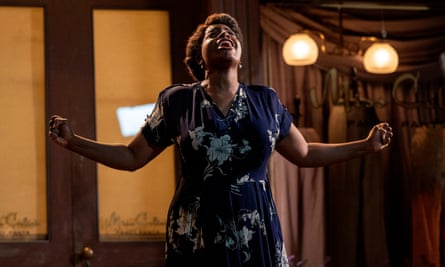The Color Purple, written by Alice Walker and winner of a Pulitzer Prize, chronicles the formative years of Celie, a young Black woman living in Georgia during the early 1900s. Despite enduring mistreatment from her father and husband, known as Mister, Celie perseveres.
There’s a surgical balance in how to depict Celie: someone deprived of love and compassion, but never passive, never weak. Unfortunately, the most recent big-screen musical remake, directed by Blitz Bazawule and written by Marcus Gardley, doesn’t live in the fullness of Celie’s life, notably Celie’s queerness.
Different approaches have been taken in expressing Celie’s thoughts, from Walker’s original writing to later versions. In the 1982 book, Celie communicates her experiences and feelings through letters addressed to God, providing depth to her story beyond the mistreatment she endures.
Steven Spielberg’s 1985 adaptation featured the use of voiceovers from a child and adult Celie (portrayed by the powerful Whoopi Goldberg). However, Bazawule takes a different approach by omitting the use of letters completely and instead using fantastical scenes to portray Celie’s inner thoughts. For example, in one scene, the gentle Fantasia Barrino, playing Celie, daydreams as she helps Shug Avery (played by Taraji P Henson) take a bath; in her imagination, Celie traces Shug’s soapy arm as they twirl on an imaginary turntable. In another sequence, the two women dance in elegant flapper outfits before sharing their first real kiss.
The additions offer a brief insight and serve as a necessary contrast to the harshness of the original material. However, the extravagant daydreams mostly mirror Celie’s feelings instead of shedding light on them. They overlook Celie’s intricacies, which are captured in Walker’s writing. The reluctance to dwell on significant events in Celie’s life is most frustratingly evident in her romantic involvement with Shug.
Bazawule recognizes Celie as a prominent figure in the queer community and has stated that the new film strives to highlight her sexual orientation. However, it would be inaccurate to say that queerness is the main focus of this updated version. The portrayal of Celie and Shug’s relationship, which is a crucial aspect of Walker’s original work, remains modest and reserved.
Bazawule’s interpretation is a more obvious portrayal of same-sex relationships compared to Spielberg’s (the 154-minute film showed only one kiss between the two characters without any indication of a lasting relationship), however it lacks the authentic love between the two women.
Walker’s novel depicts the depth of Celie and Shug’s bond, but Bazawule fails to develop a lasting connection between them or acknowledge their separation (as portrayed in the 2005 Broadway version). In Walker’s writing, Celie experiences the fullness of womanhood through her relationship with Shug, discovering self-love, independence, and sexuality.
Celie realizes her ability to experience sexual pleasure with the help of Shug, even before they engage in sexual activity. Shug supports and guides Celie in exploring her sexuality by observing as she looks at her vagina in a mirror.
Shug remains beside Celie as she navigates additional upheaval. When Celie discovers that Mister has been hiding letters from her sister, Shug cuddles with Celie and encourages her to find agency through making and wearing pants.
In Bazawule’s interpretation, Celie’s choice to begin selling pants is an unexpected turning point that occurs after she inherits money from her birth father. However, Walker’s original text is clear: the decision to wear and make the pants is a rebellious act, influenced by Shug as a way to defy Mister’s oppression.
Instead of respecting Walker’s wishes, the film largely ignores the couple’s relationship and the betrayals that occur within it.
Shug’s decision to have a fling with a 19-year-old boy (also featured in the Broadway musical adaptation) is removed. The plot point served as a nod to the expansiveness of Shug’s own sexuality, but also Celie’s deep investment in their mutual domesticity.

Instead of glossing over it, Bazawule and Gardley make a point to depict the abuse that Celie suffers in great detail. The physical violence she endures, such as slaps, is not left out. Even in one of the movie’s early fantasy scenes, where Celie envisions herself as a glamorous version of Shug, the reality of her being raped by Mister is not ignored.
The mistreatment is a crucial aspect of Walker’s narrative. However, in this case, Celie’s degradation is given more importance than her connection with Shug and her overall process of recovery.
During a period where Black individuals who identify as queer are experiencing heightened dangers and aggression, the decision to censor Celie’s queerness is particularly harmful. The Black queer and transgender community is facing growing threats and discrimination, with new laws being passed and an increase in hate crimes targeting both Black and queer individuals across the country.
The newest interpretation of The Color Purple could offer a valuable demonstration of the restorative power of queer relationships. It has the potential to celebrate and elevate the Black sapphic community, particularly in a society where these connections are often viewed with suspicion and disapproval.
Unfortunately, that aspect of Celie’s life has been neglected. When Celie proclaims her presence and beauty, her queerness should also be acknowledged.
Source: theguardian.com


















